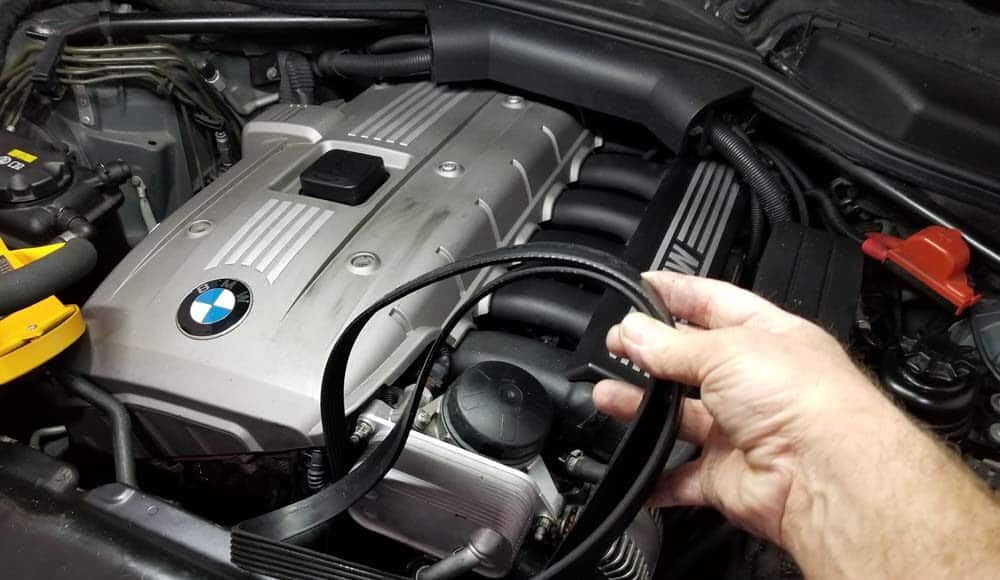Affiliate link disclosure – The BMW Repair Guide uses affiliate links in their site. For more information on affiliate links, please click here.
Repair Summary
This article gives detailed instructions on replacing the main accessory (serpentine) belt, tensioner and idler pulleys in a BMW E60/E61 5 series vehicle with the N52 6 cylinder engine. Even though we used a 2006 E61 touring wagon to perform this repair, this article can be applied to any vehicle with the N52 engine including 1,3,5,6,7,X1,X3, and Z4 models with minor modifications to the repair steps.
See all vehicles this article applies to
E60 5 Series M5
E60 5 Series 523Li
E60 5 Series 550i
E60 5 Series 545i
E60 5 Series 540i
E60 5 Series 535d
E60 5 Series 530xi
E60 5 Series 530xd
E60 5 Series 530Li
E60 5 Series 530i
E60 5 Series 530d
E60 5 Series 525i
E60 5 Series 525xi
E60 5 Series 525Li
E60 5 Series 525d
E60 5 Series 523i
E60 5 Series 520i
E60 5 Series 520d
E60N 5 Series 550i
E60N 5 Series 525xi
E60N 5 Series 540i
E60N 5 Series 535xi
E60N 5 Series 535i
E60N 5 Series 535d
E60N 5 Series 530xi
E60N 5 Series 530xd
E60N 5 Series 530Li
E60N 5 Series 530i
E60N 5 Series 528xi
E60N 5 Series 530d
E60N 5 Series 528i
E60N 5 Series 525Li
E60N 5 Series 525xd
E60N 5 Series 525i
E60N 5 Series 525d
E60N 5 Series 523Li
E60N 5 Series 523i
E60N 5 Series 520Li
E60N 5 Series 520d
E60N 5 Series 520i
E61 5 Series 550i
E61 5 Series 530d
E61 5 Series 545i
E61 5 Series 535d
E61 5 Series 530xi
E61 5 Series 530xd
E61 5 Series 525i
E61 5 Series 530i
E61 5 Series 525xi
E61 5 Series 525d
E61 5 Series 523i
E61 5 Series 520d
A BMW E60 belt and pulley replacement can help cure that "whining" sound coming from the engine compartment.
If you have owned a BMW E60 5 series vehicle for an extended period of time (or have currently purchased a high mileage one), then you will eventually experience the trademark "whining" or "squealing" sounds from the engine compartment characteristic of failing pulley bearings. In fact, if you hear any type of squeaking from the engine after starting your 2006-2010 5 series, there is an extremely high probability that it is either a worn tensioner pulley, deflection pulley, or serpentine belt.
The tensioner pulley on the BMW E60 5 series is a spring-loaded mechanism that applies pressure to the main accessory (serpentine belt) so it does not slip. Over time the bearings inside the tensioner pulley wear out causing a "squealing" sound...most noticeably while the engine is idling. The deflection pulley, located next to the alternator, helps to efficiently route the main accessory belt around the left side of the engine - it is also prone to worn bearings as it ages. It is good practice to always replace both the BMW E60 tensioner pulley and the deflection pulley together...it is virtually impossible to detect which one is failing since they are located so close together.
The BMW E60 main accessory belt, also known as the serpentine belt, harnesses the power from the crankshaft pulley to operate the alternator, power steering pump, and air conditioning compressor (the water pump on 2006-2010 5 series vehicles with the N52 engine is electric and is not driven by the serpentine belt like in earlier models). Time and the brutal heat conditions inside the engine compartment take their toll on the serpentine belt, causing it to dry out and eventually crack. Severely worn BMW E60 serpentine belts will begin to slip on the accessory pulleys causing a nerve grating screeching sound. A worn serpentine belt should be replaced immediately to avoid catastrophic engine damage in the event it breaks while driving.
Replacing the BMW E60 belts and pulleys
In 2006 BMW introduced the new generation N52 6 cylinder engine in many of the E60/61 5 series models. One of the most notable advancements in the N52 engine was that it only operated with one accessory drive belt instead of two; it no longer had the secondary AC drive belt found in its 6-cylinder predecessors like the M54. This made changing the belt and pulleys a much easier procedure on the N52 engine since the front end of the vehicle did not have to be raised to access the lower AC belt. The N52 engine was also manufactured with an electric cooling fan - a welcomed change for mechanics who now had more room in front of the belts and pulleys for servicing.
A BMW E60 belt and pulley replacement is an easy repair for the home mechanic with average abilities and can save a very expensive trip to the dealership. Since the belt and pulleys can be easily accessed from the top of the engine compartment on 2006-2010 5 series vehicles, it is a repair that can be done safely in a driveway or garage without the need of special equipment. We give you full step-by-step instructions on doing the repair along with a comprehensive parts list for your convenience.


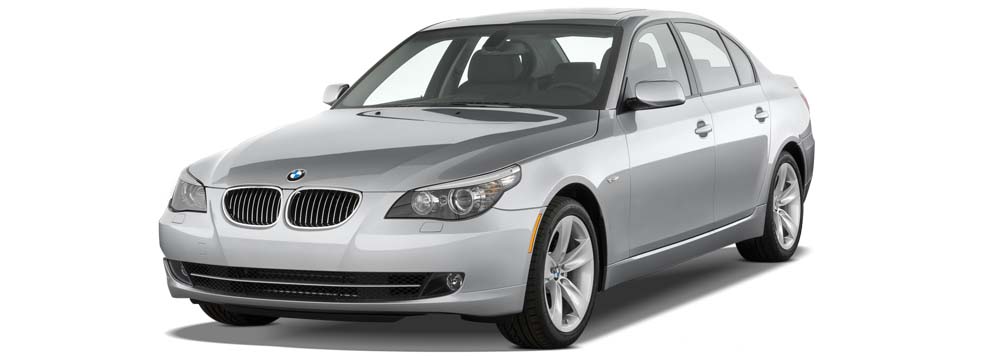
View the detailed parts diagram for this repair.
Includes detailed part diagrams, part numbers and links to purchase all of the required components needed to complete this repair.

Before starting this repair, you must have the following required parts.
All vehicles with the BMW N52 engine
Automatic tensioners are constantly adjusted by an internal coiled spring that maintains the correct tension on the accessory belt. Tensioners with weak springs or worn rollers allow belts to slip. This results in noise, poor power transfer, and accelerated belt wear.
All vehicles with the BMW N52 engine
Commonly replaced when servicing belts or cooling system, or when it begins to make noise.
All vehicles with the BMW N52 engine
If you're not too thrilled about purchasing each part from separate vendors, this all-in-one kit by Contitech has everything you need to complete this repair in a single package delivered to your door with prime shipping. Included in the kit are the belt tensioner, deflection pulley, and accessory belt making it easy for those of us who prefer not to track each part number down individually. Highly recommended.
All BMW E60 6 cylinder vehicles
Often overlooked, a clean air filter can make a noticeable difference in performance and fuel economy in your vehicle. When a vehicle's air filter is not properly serviced, it restricts air flow into the engine which directly translates to less horsepower to the wheels. This Part Fits the Following Vehicles: All BMW E60 6 cylinder vehicles
Section 1 - Removing the BMW E60 Accessory Drive Belt
Removing your 5 series' serpentine belt is an easy procedure thanks to the extra room that was created in front of the engine when BMW changed over to an electric cooling fan. We strongly recommend taking the extra few minutes and removing the intake muffler. This will give you clear access to the left side of the engine and will make the repair go a lot smoother. It will also allow you to remove the tensioner pulley in Section 2 without disconnecting any coolant lines.- Identify the intake muffler on the left side of the vehicle.
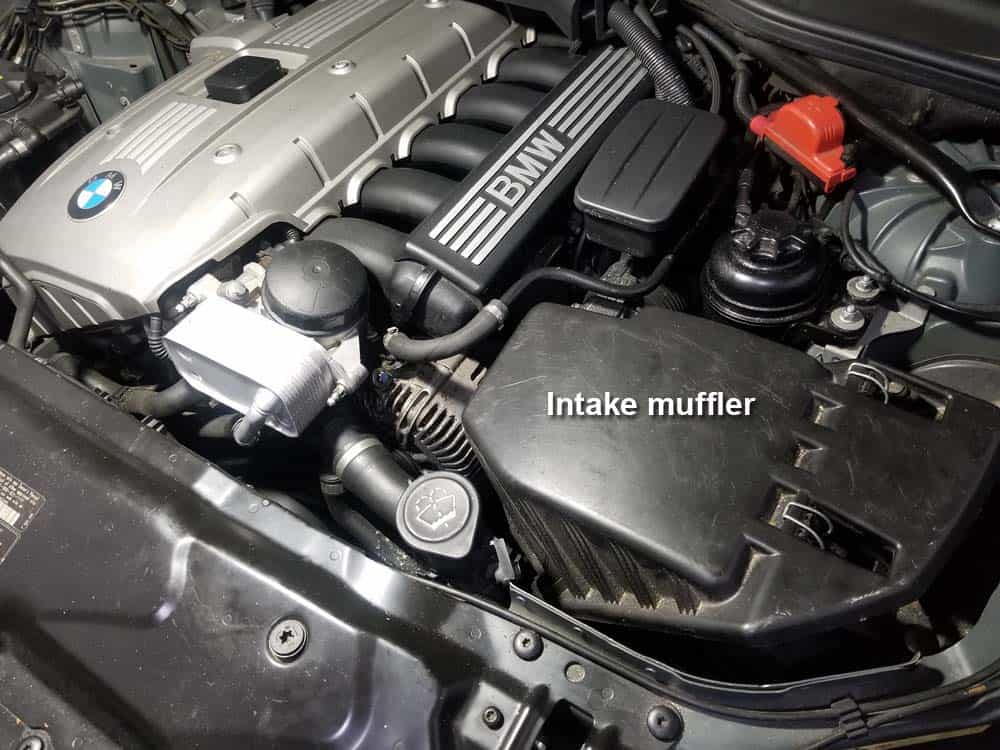
- Use a small metal pick to release the plastic retaining clip on the mass air flow (MAF) sensor. With the clip released, use a small flat blade screwdriver to unplug it.
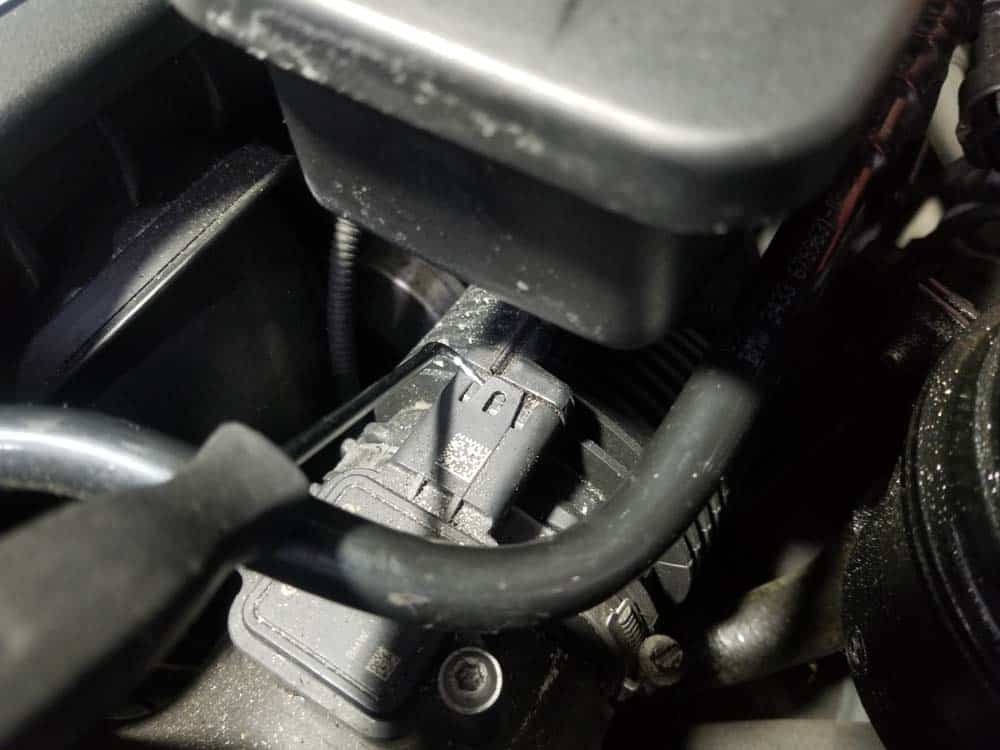
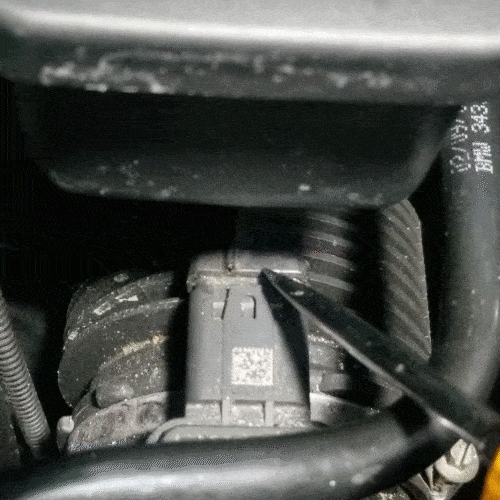
- Use a flat blade screwdriver to loosen the hose clamp anchoring the rubber intake boot to the intake muffler.
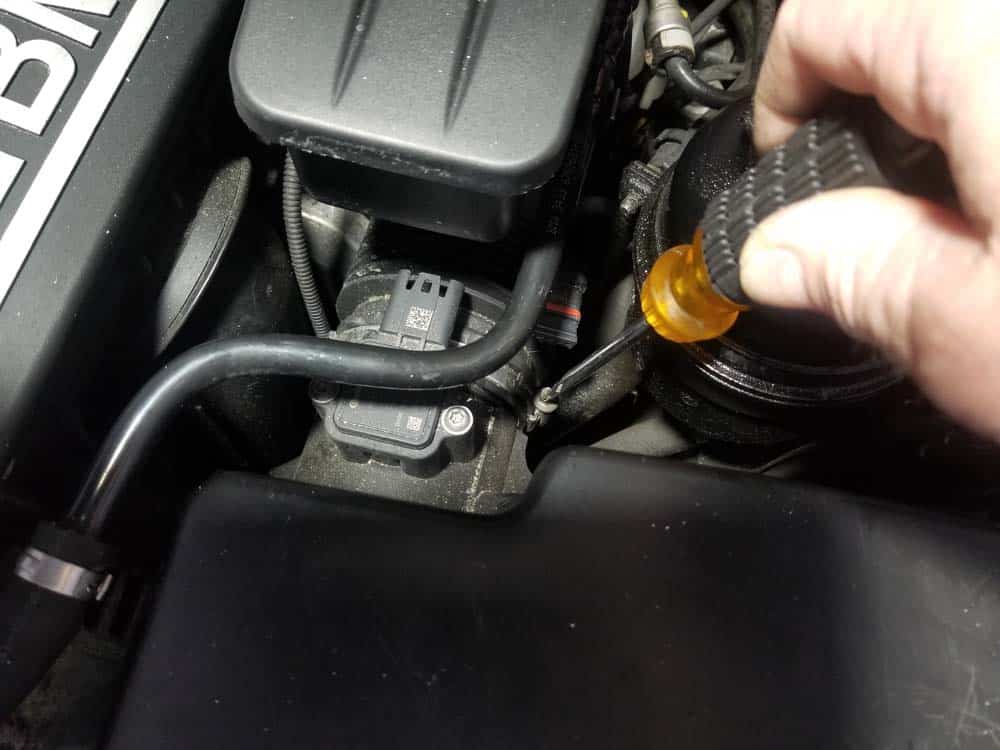
- Unsnap the intake muffler lid and remove from the vehicle.
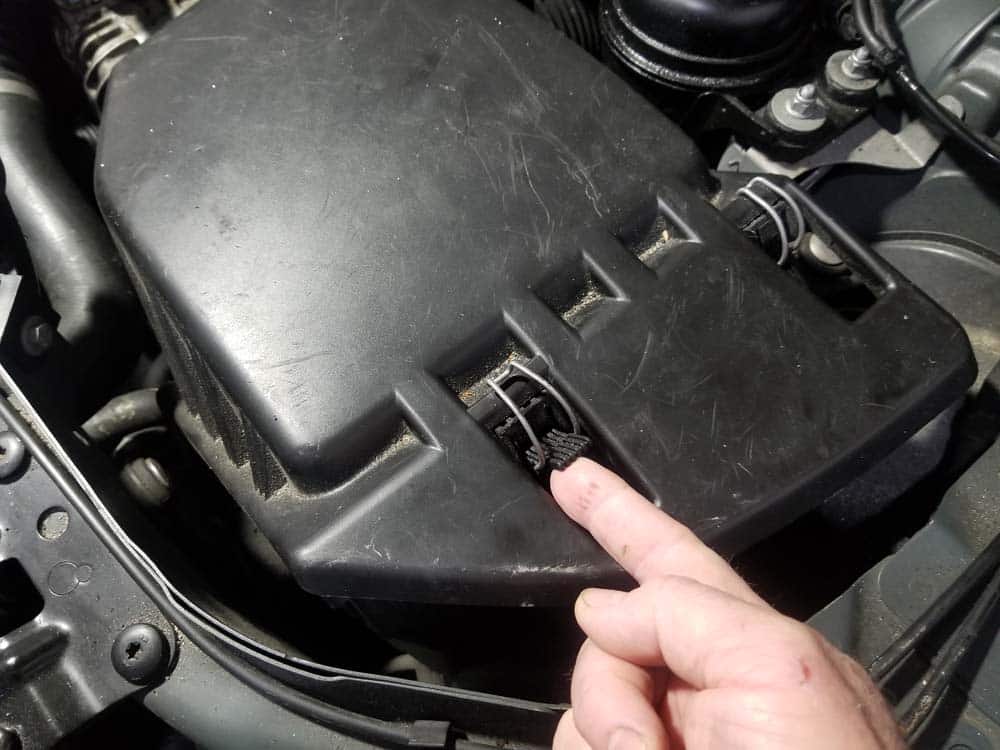
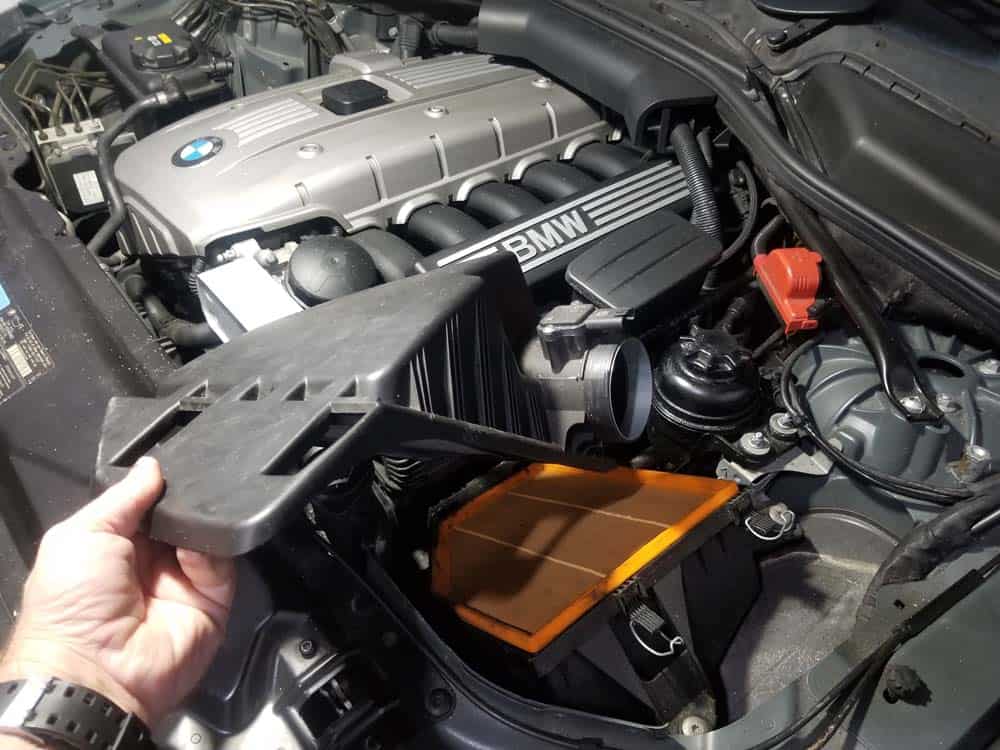
- Use a T30 Torx bit to remove the two intake muffler mounting bolts.
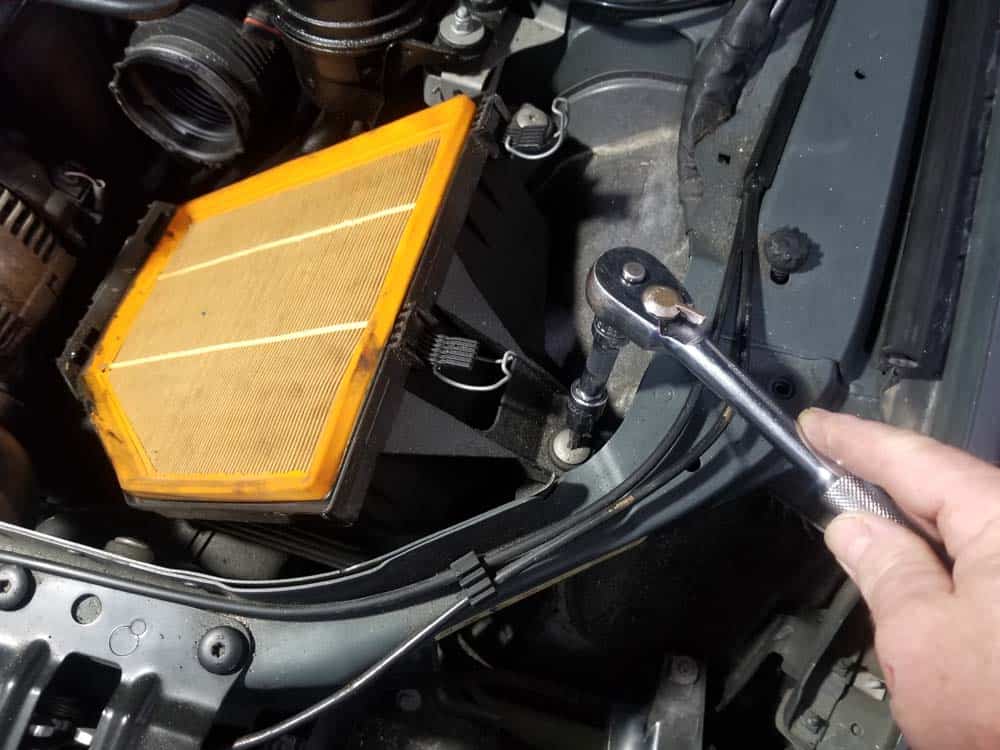
- Remove the air filter element.
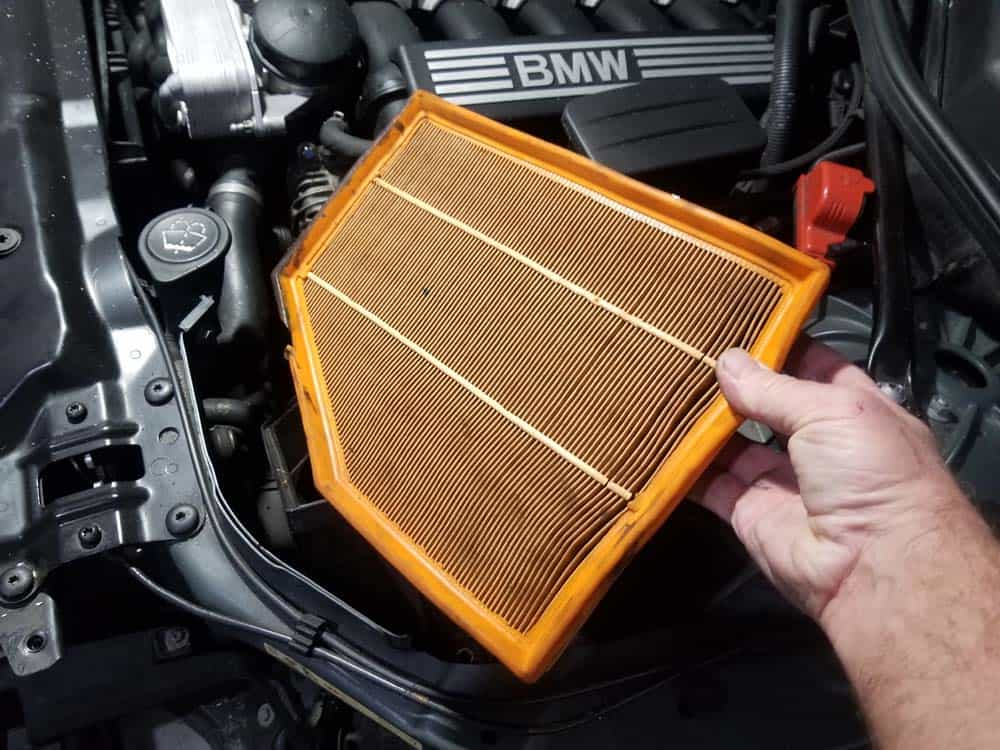
- Use the T30 Torx bit to remove the last intake muffler mounting bolt. Grasp the intake muffler and remove it from the vehicle.
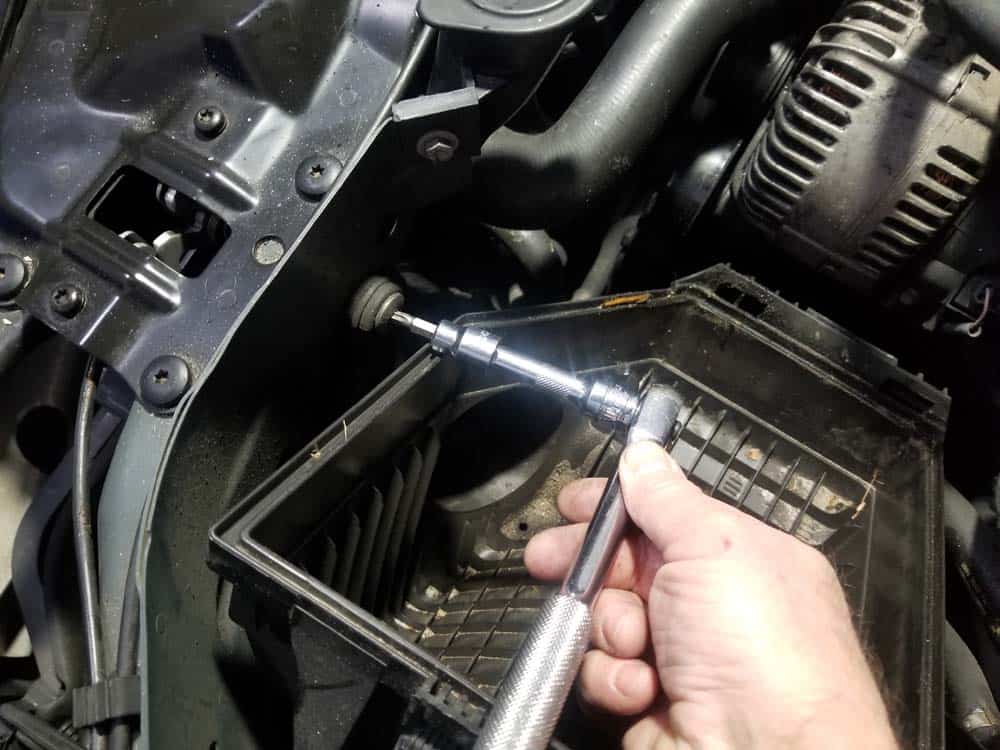
- Locate the main accessory belt tensioner pulley on the front of the engine. Use a small flat blade screwdriver to remove its dust cap.
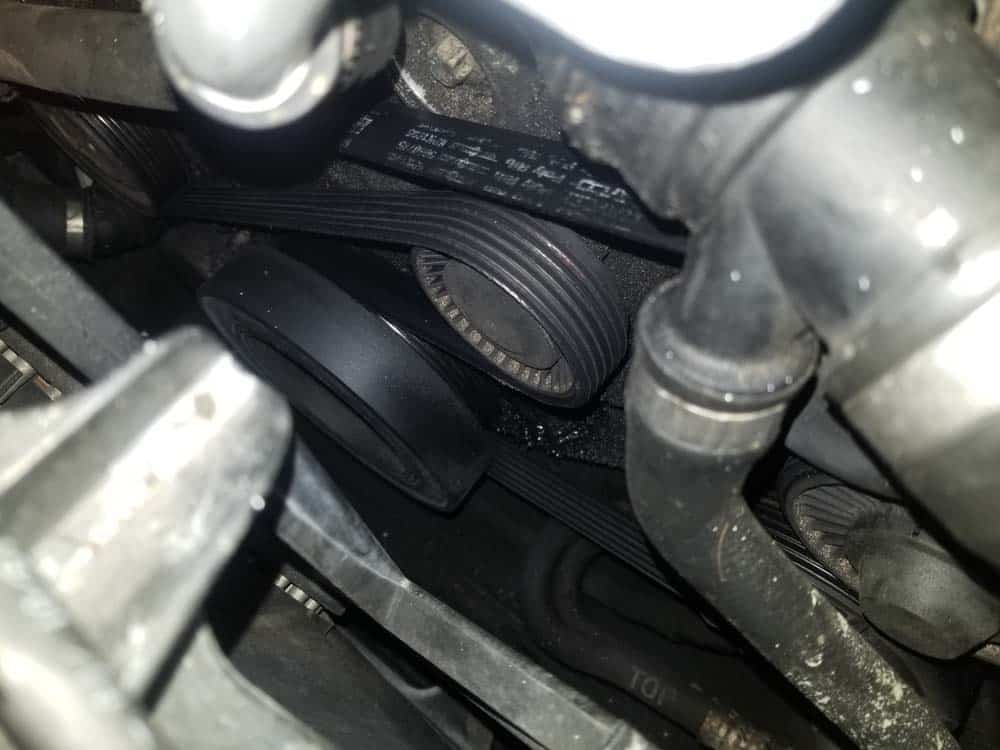
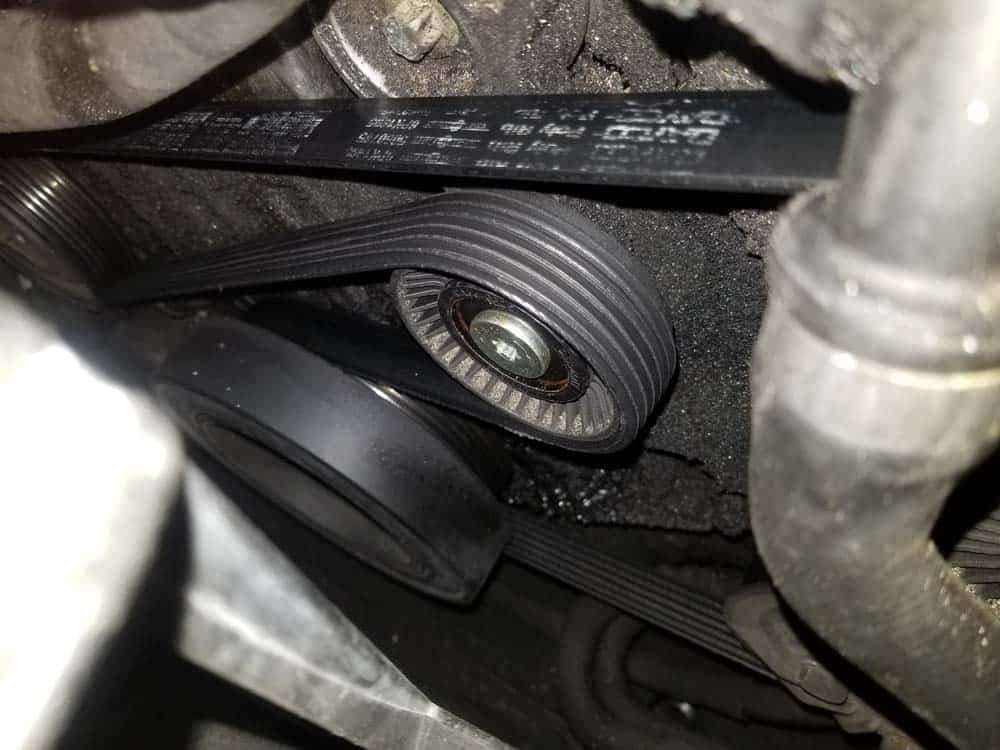
- Using a T50 torx bit and a long handle socket wrench, turn the tensioner pulley clockwise to release the pressure on the main accessory belt.
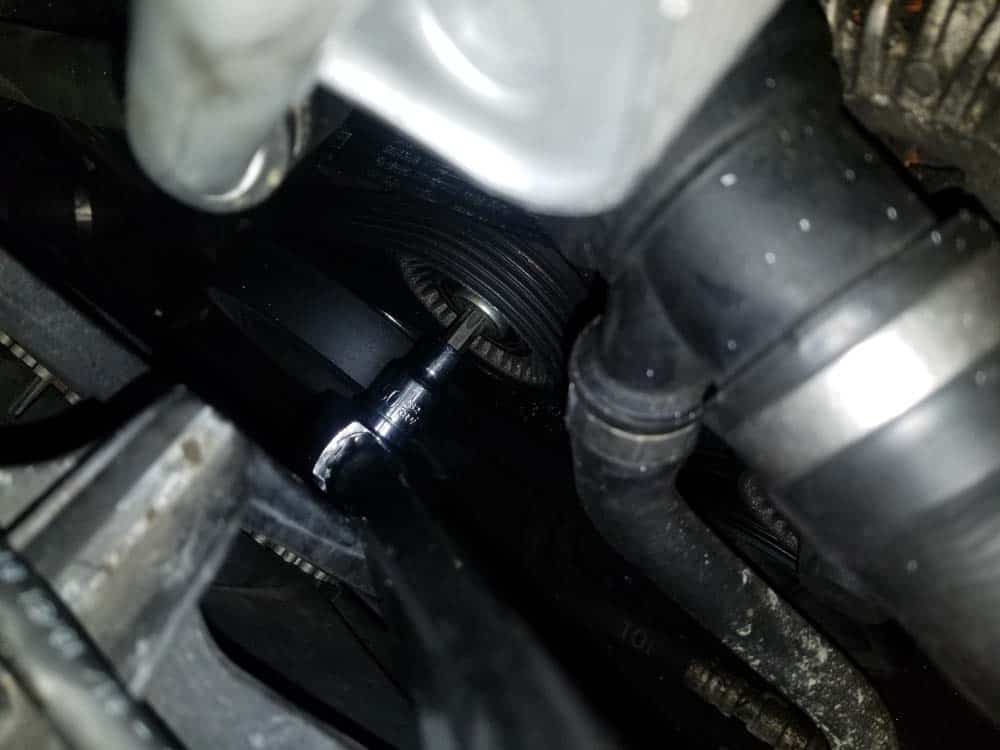
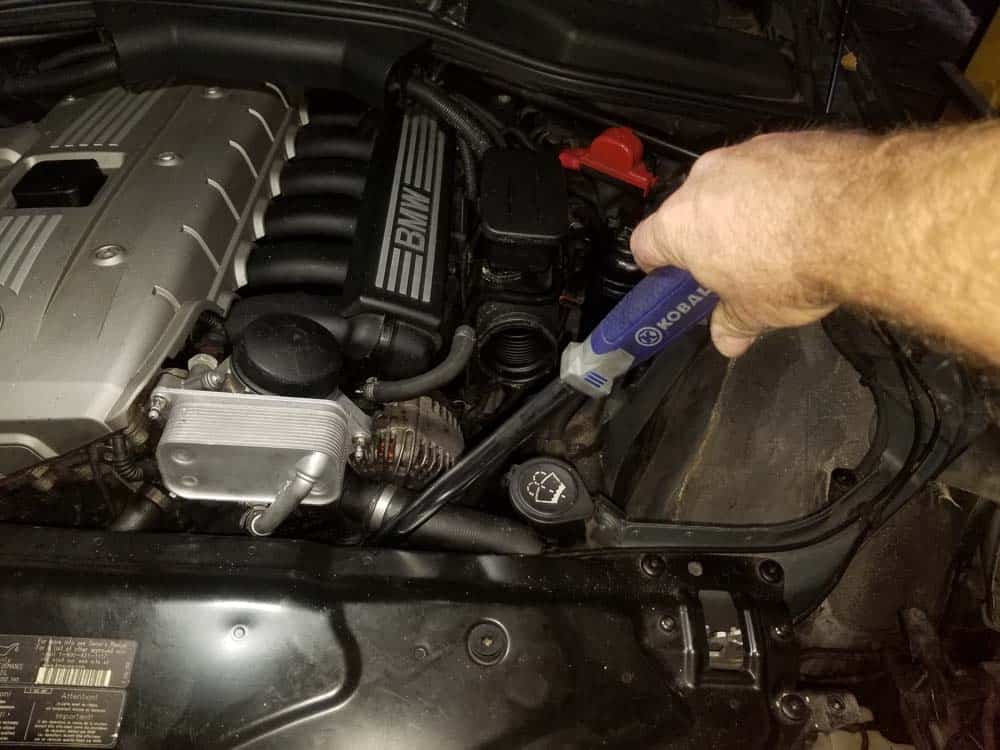
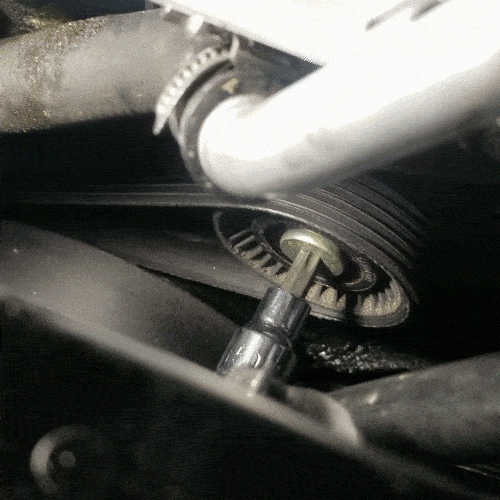
- With the pressure off of the main accessory belt, reach down and pull the belt off of the tensioner pulley.
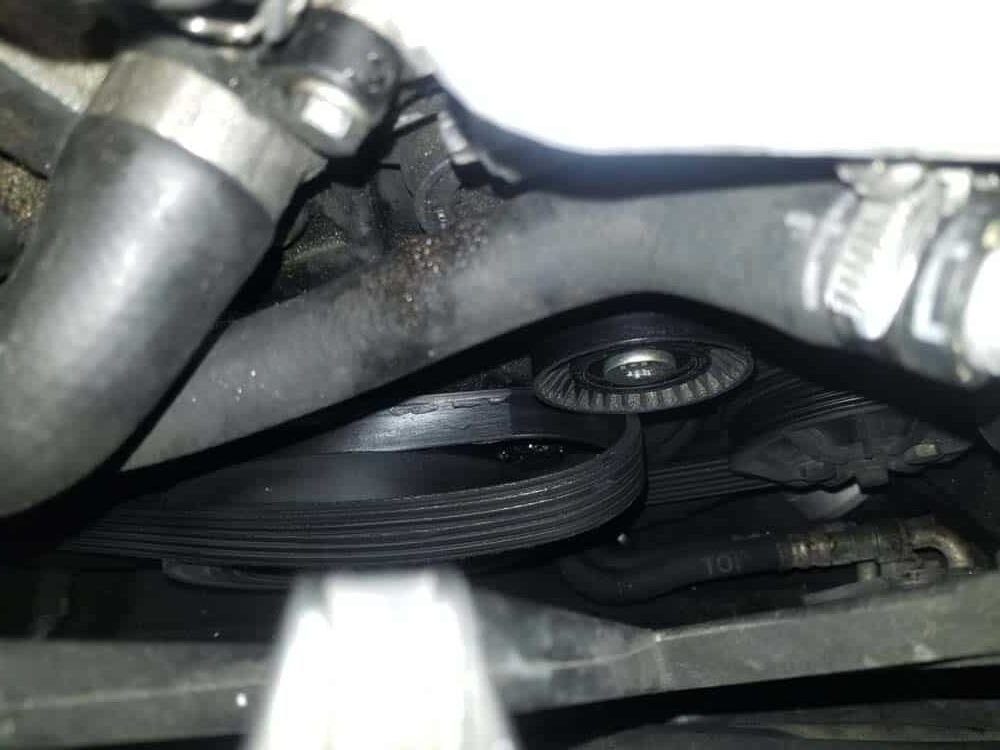
- Pull the belt loose from the alternator. Reach down the front of the vehicle and remove the belt from the engine.
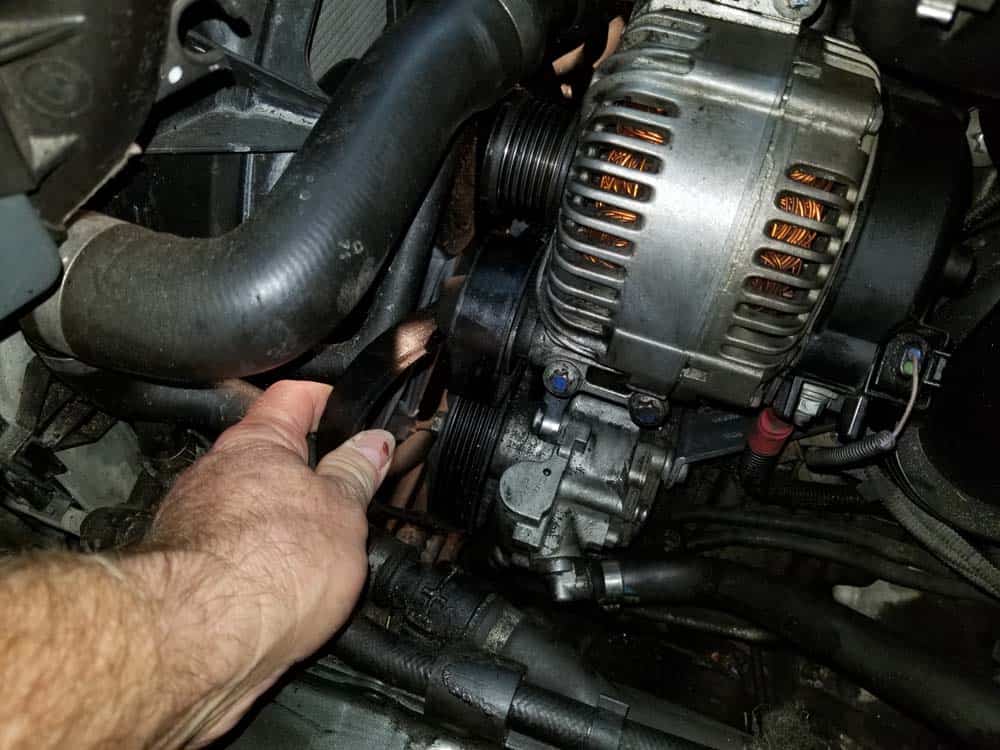
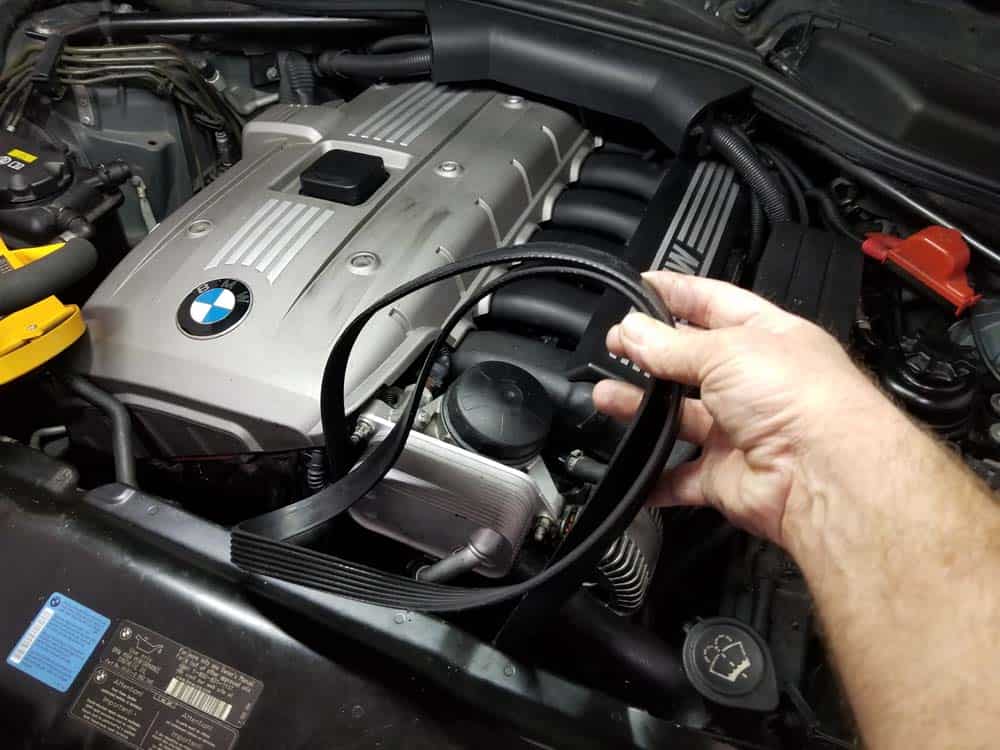
Section 2 - Removing the BMW E60 Tensioner and Deflection Pulleys
Removing the tensioner and deflection pulleys from the N52 six cylinder engine in your 5 series vehicle is a simple procedure. As we stated earlier, thanks to the use of an electric cooling fan, there is now plenty of room in front of the engine to get a socket wrench in with disassembling a lot of parts.- Begin by removing the oil cooler coolant line by loosening its hose clamp and pulling it free. Be aware that the line is full of coolant and it will discharge if not clamped off; we like to use a pair of plastic hose pinch off pliers to get the job done.
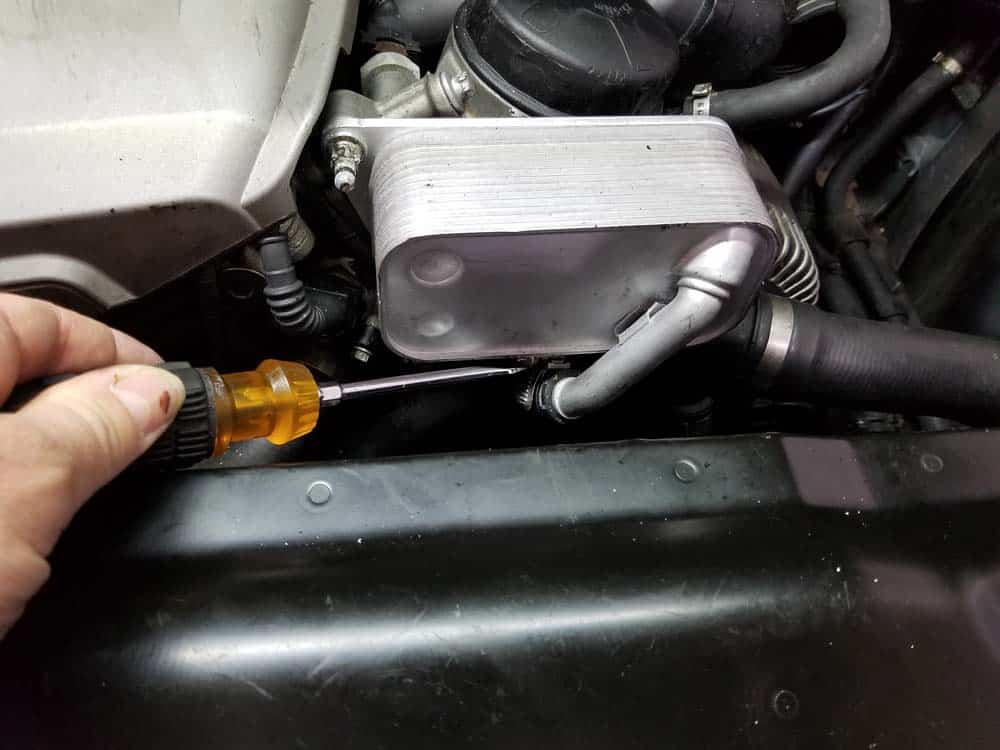
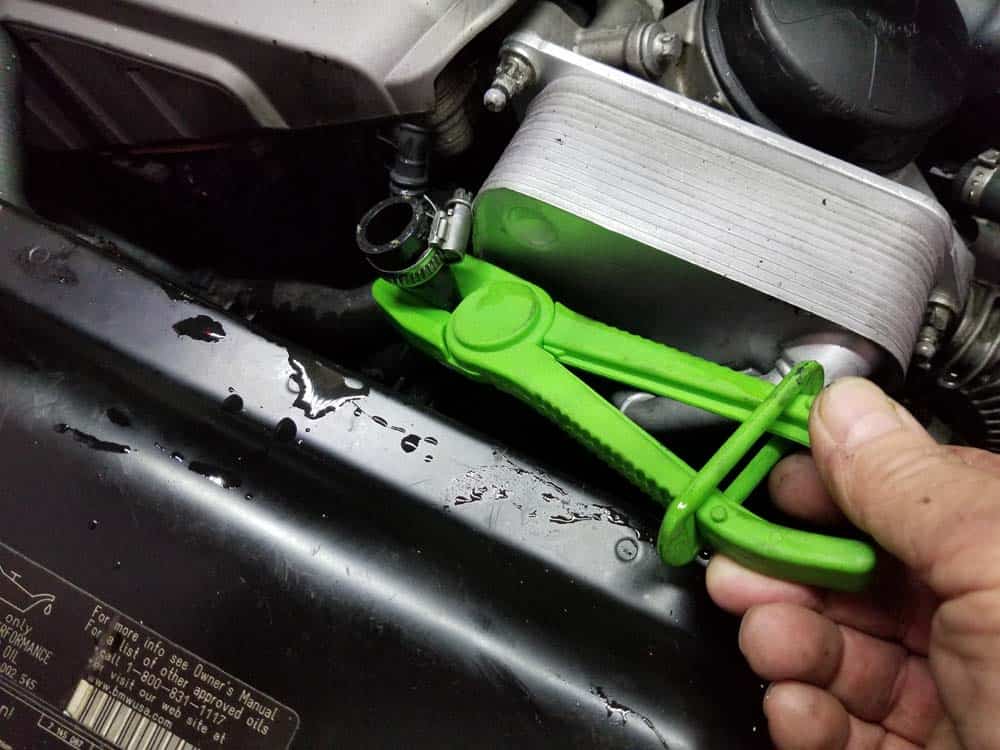
- Identify the tensioner pulley on the front of the engine.
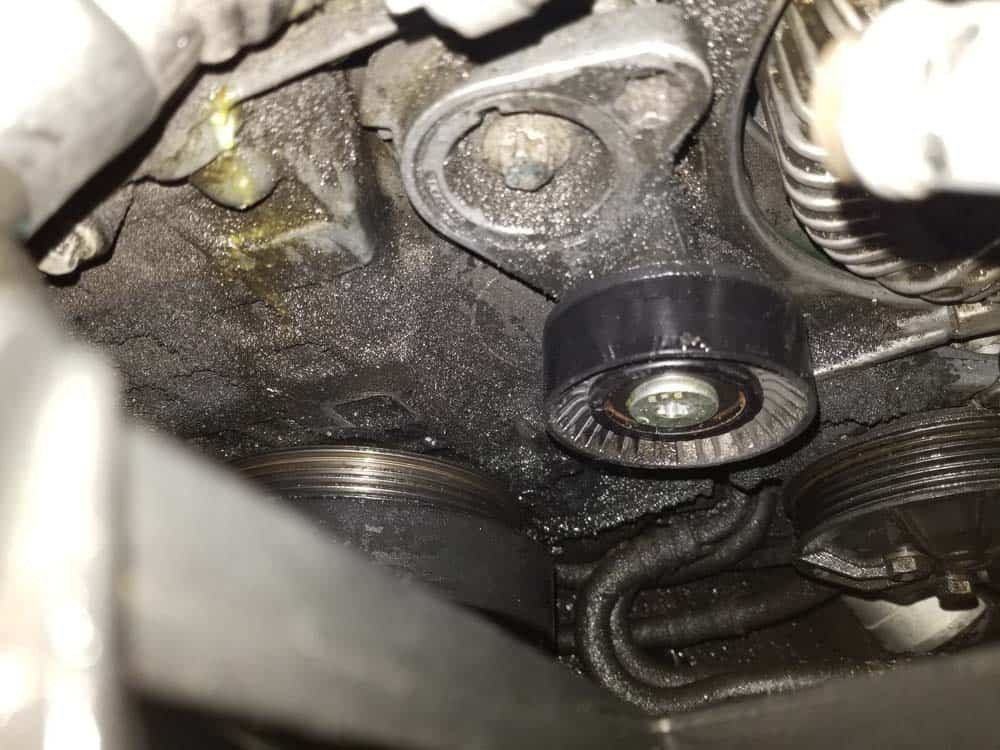
- Using an E12 external torx socket, remove the tensioner pulley mounting bolt.
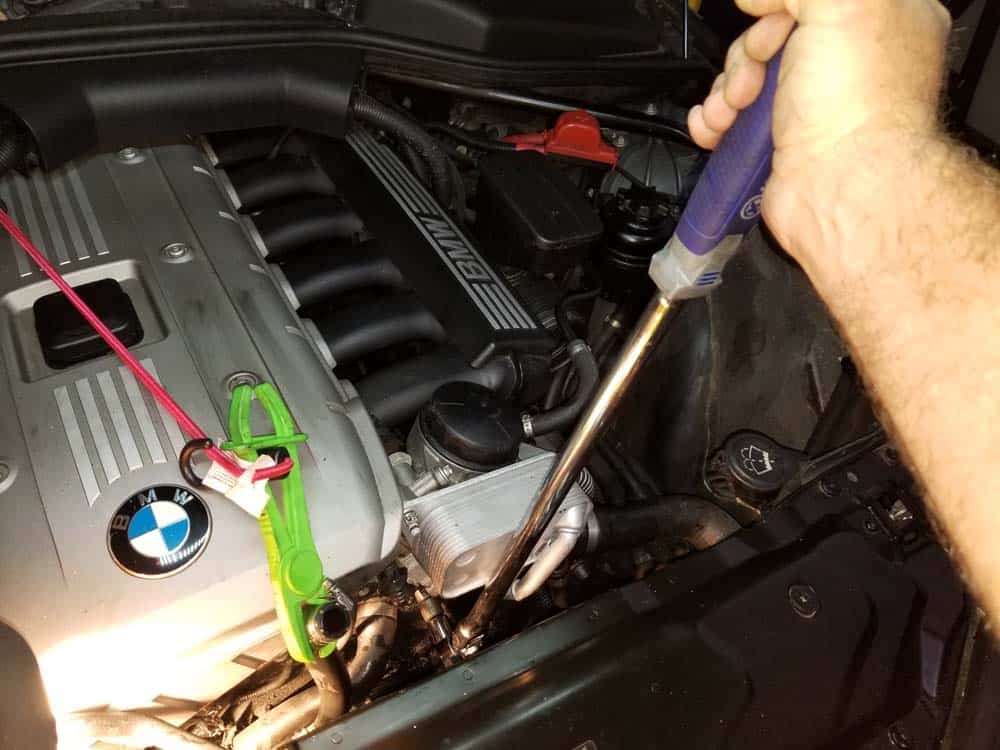
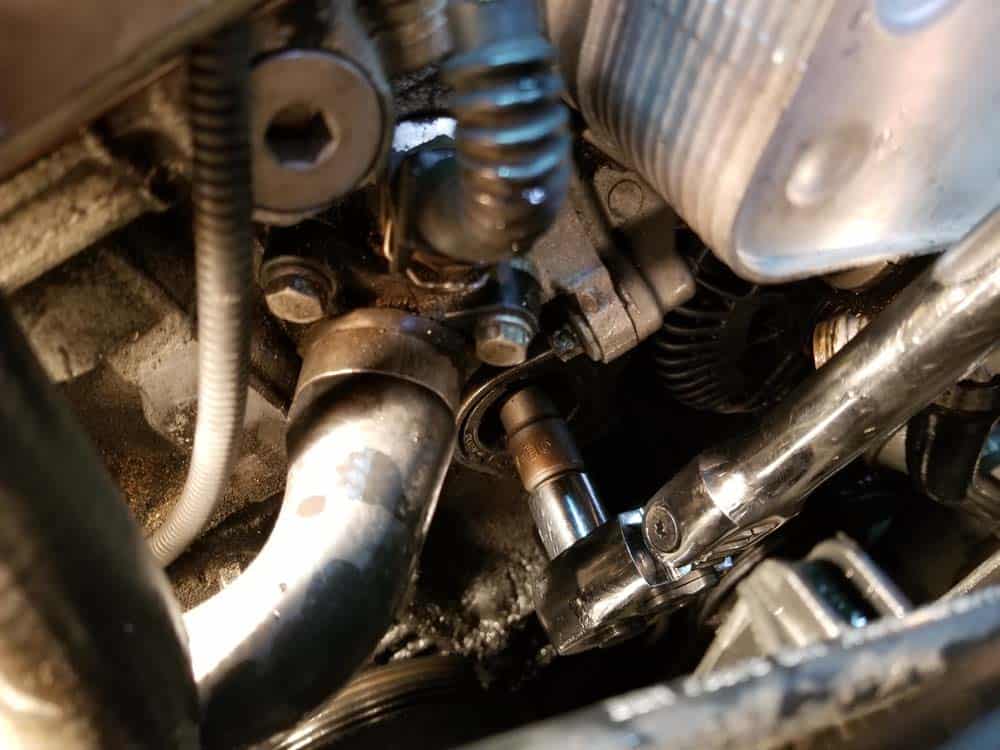
- Remove the tensioner pulley from the engine. We find sliding it around and under the alternator is the easiest method and prevents the need for removing any more coolant hoses.
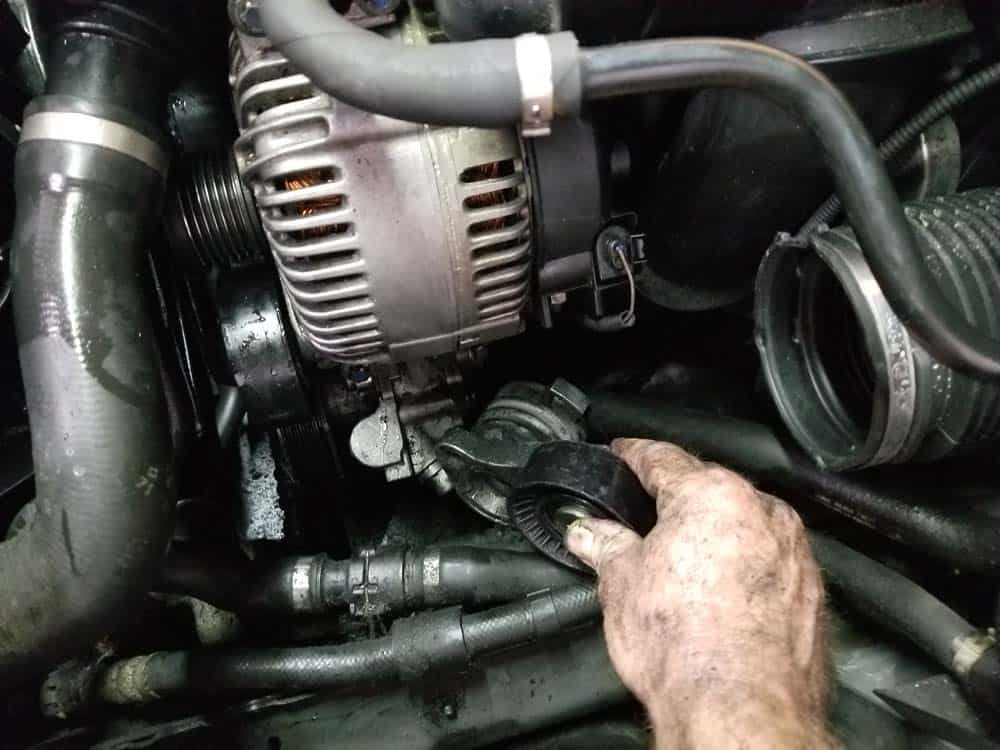
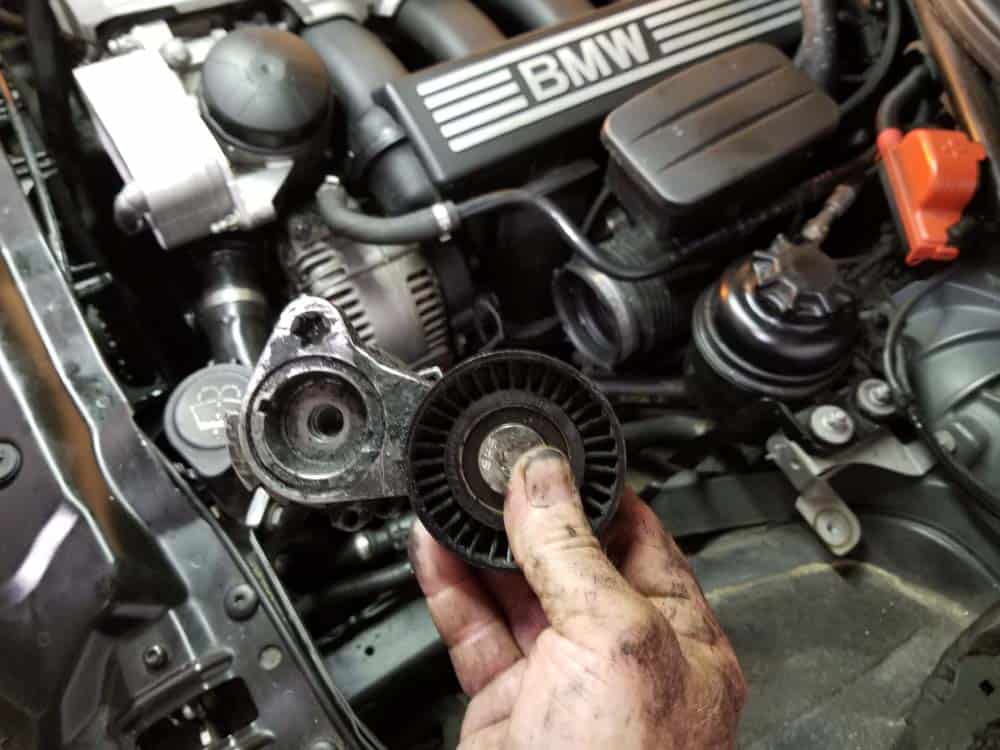
- Identify the deflection pulley. It is located underneath the alternator. Use a flat blade screwdriver to remove its protective cap.
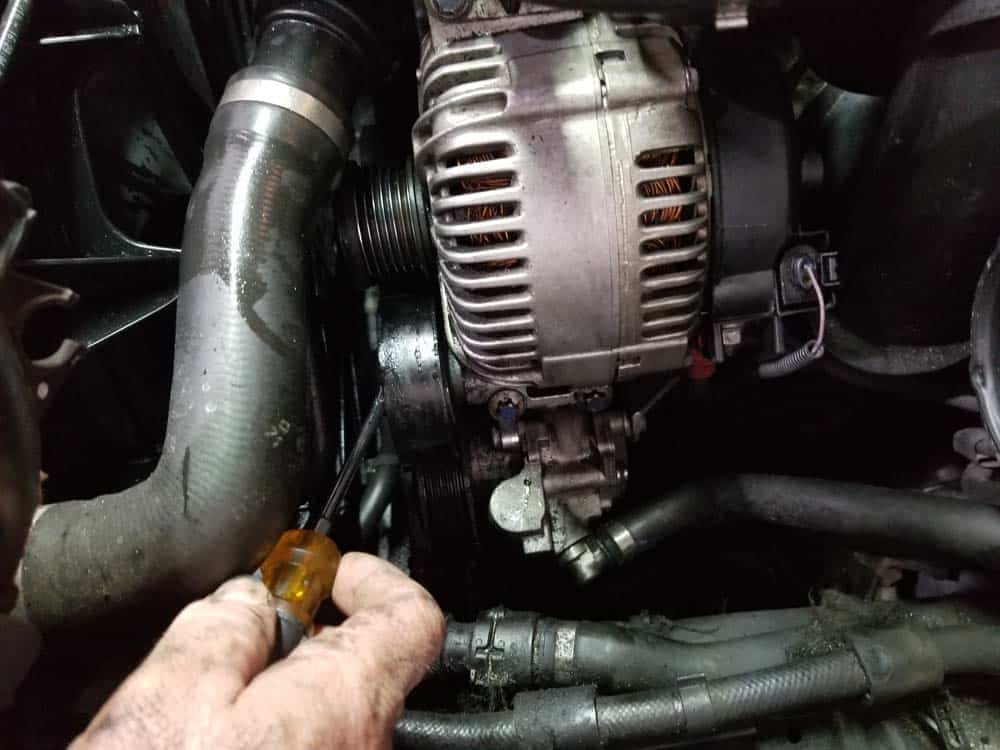
- Use a 16mm socket wrench to remove the deflection pulley bolt. Remove the deflection pulley from the vehicle.
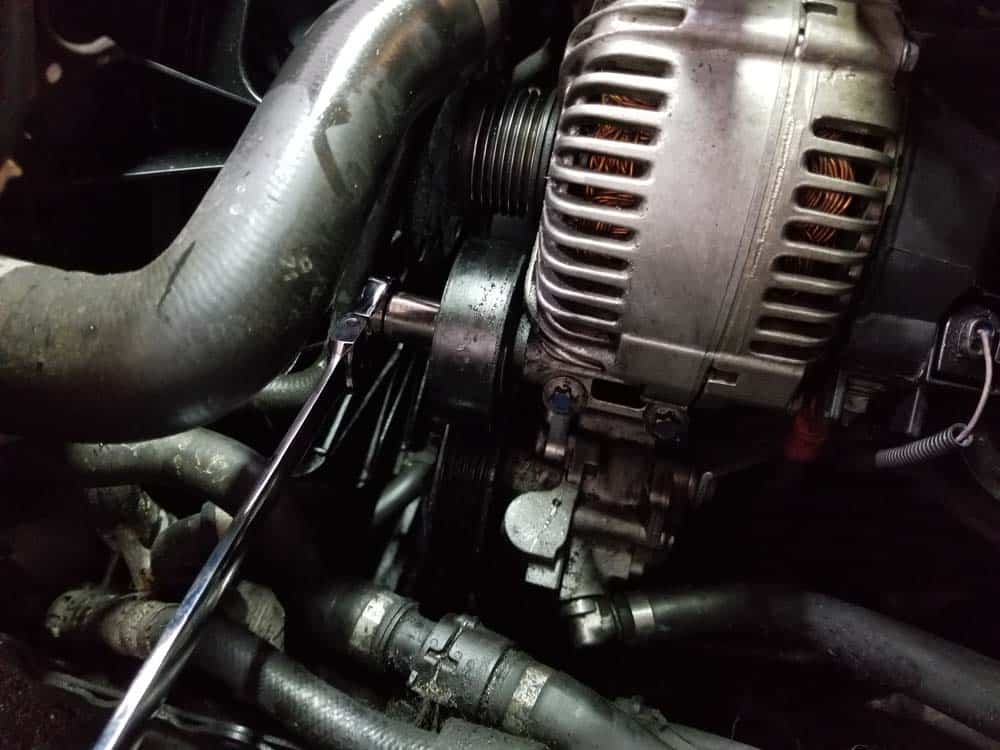
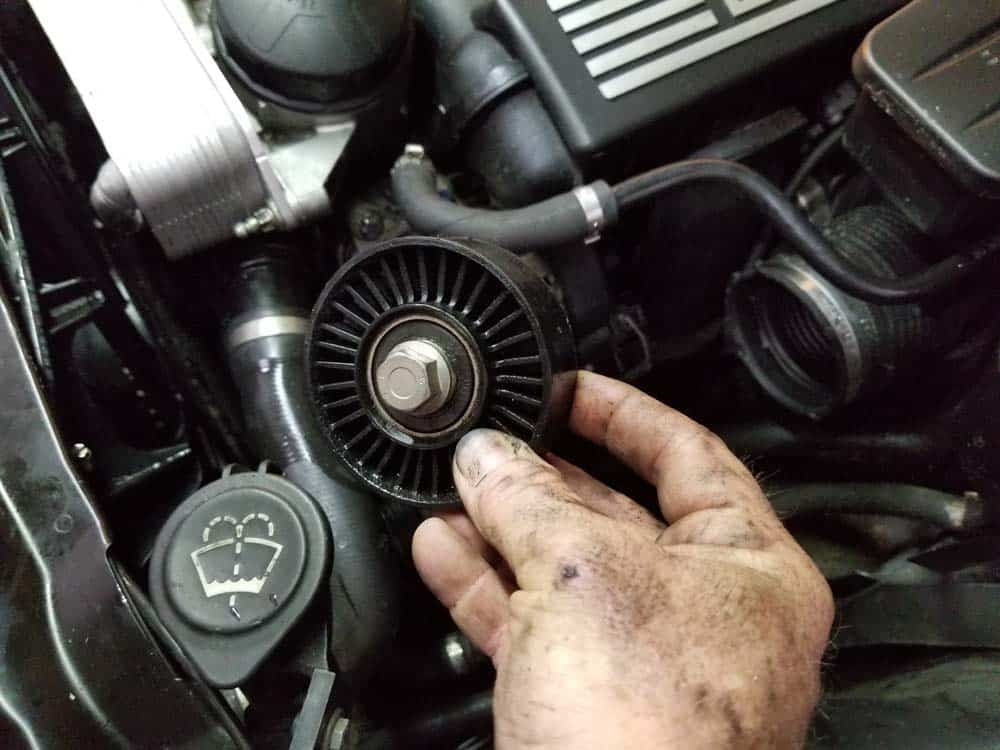
Section 3 - Reassembling the Vehicle
Installing the new pulleys and serpentine belt is very straightforward with no special steps. Make sure you route the new serpentine belt correctly...please see the routing diagram below for the N52 engine. We have provided a handy installation checklist, along with critical torque values for the pulley bolts. BMW E60 Belt and Pulley Reassembly Checklist
***The following steps were performed on a 2006 BMW 530xi touring wagon ...other models may vary.- Install the new deflection pulley and torque its mounting bolt to 50 Nm (37 ft-lb).
- Install the protective cap back on the deflection pulley.
- Install the new tensioner pulley on the front of the engine and torque its mounting bolt to 50 Nm (37 ft-lb).
- Snap the protective cap back onto the pulley.
- Reinstall the oil cooler coolant line and tighten its hose clamp until snug.
- Install a new serpentine belt. Follow the routing diagram below for the N25 engine to ensure it is installed correctly.
- Reinstall the intake muffler. Make sure the bolts are snug.
- Plug the mass air flow sensor (MAF) back in.
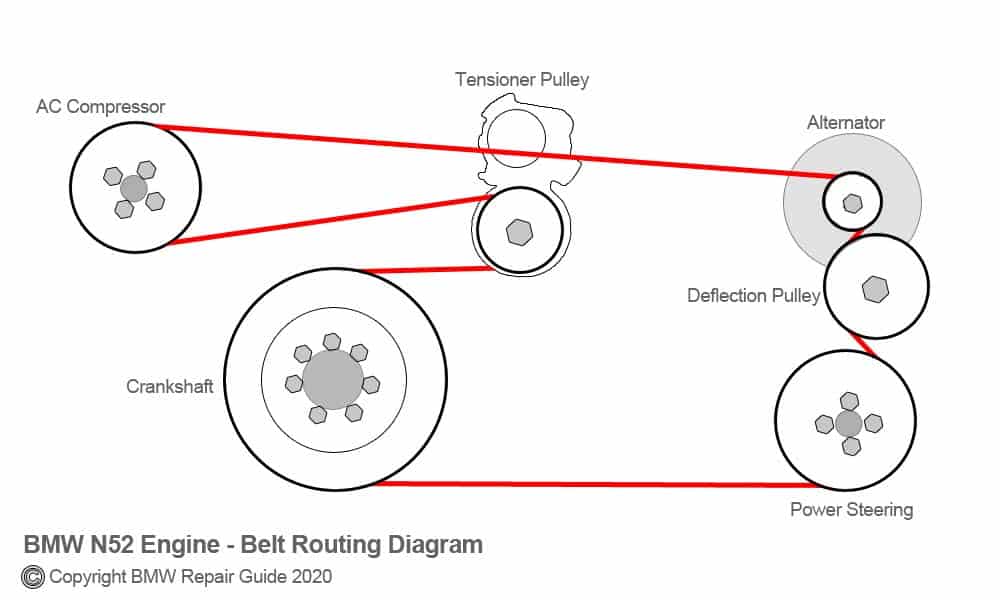
BMW E60 Belt and Pulley Replacement Finished

